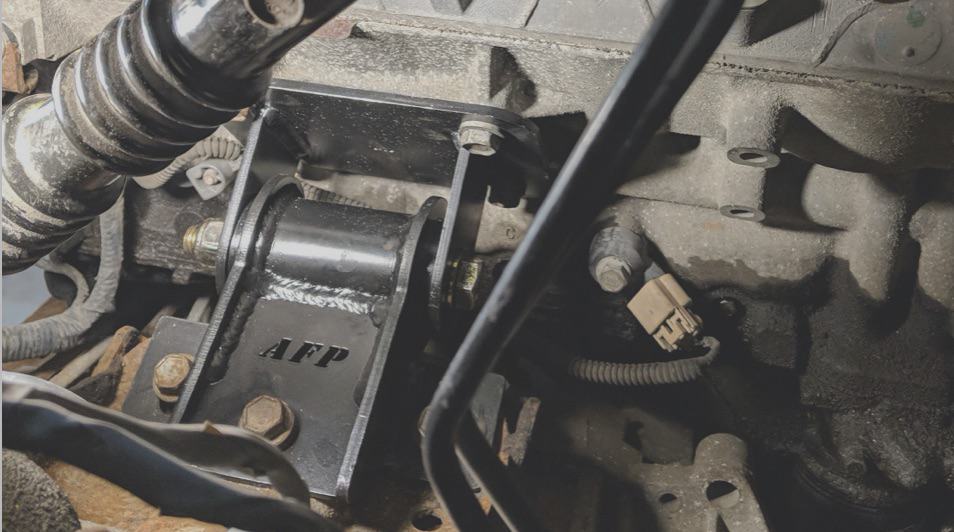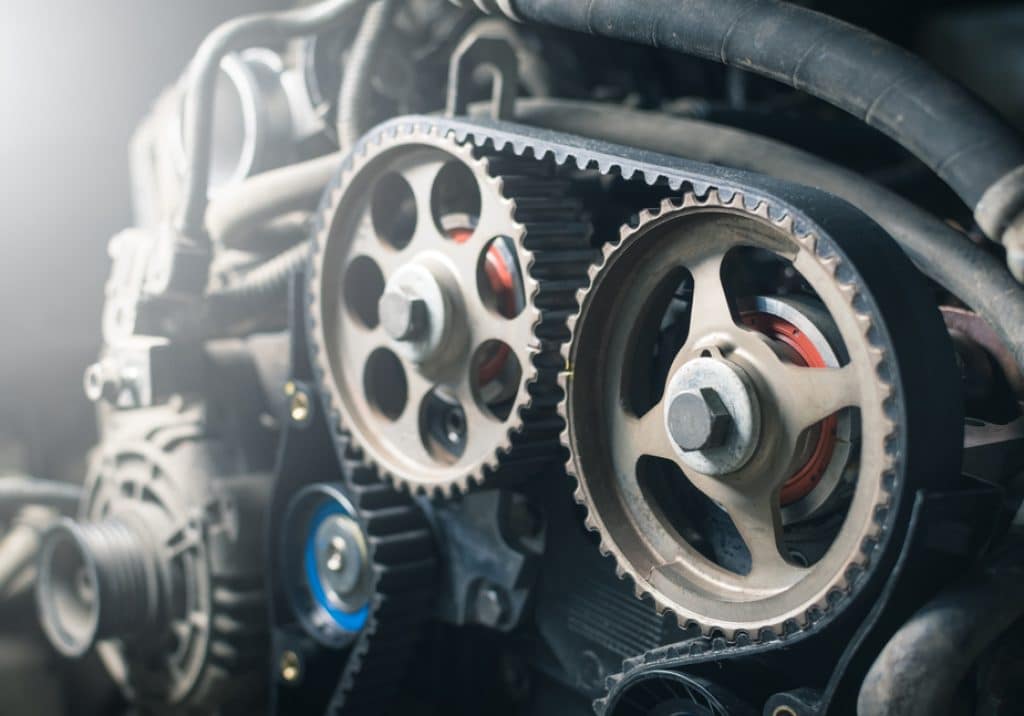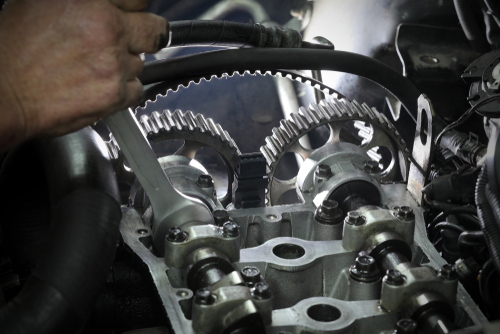Has your check engine light come on? You might be dealing with the P0023 code. This pesky little error indicates a problem with the “B” Camshaft Position Actuator Circuit on Bank 2 of your engine.

The P0023 code suggests that your engine’s computer (ECM) has detected an issue with the timing of your camshaft on the side opposite the #1 cylinder. This can lead to poor engine performance, reduced fuel efficiency, and even potential damage if left unchecked.
With a bit of knowledge and some elbow grease, you might just be able to tackle this problem head-on.
Ready to dive into the world of camshaft position actuators and variable valve timing? Buckle up, because we’re about to take you on a wild ride through the inner workings of your engine.
By the end of this article, you’ll be the life of the party at your next mechanic’s barbecue!
Key Takeaways
- The P0023 code indicates a problem with the camshaft position actuator circuit on Bank 2 of your engine.
- Common causes include faulty wiring, a malfunctioning camshaft position sensor, or a failing oil control valve.
- Regular maintenance and prompt attention to check engine lights can help prevent more serious engine issues.
Understanding the Basics
The P0023 code is all about your engine’s camshaft and its timing. It’s like your car’s heartbeat – when it’s off, things can get messy real quick.
Role of the Camshaft Position Actuator
Your camshaft position actuator is like a tiny conductor in your engine’s orchestra. It tells the camshaft when to open and close the valves. Pretty important job, right?
This little gizmo works with your engine’s variable valve timing system. It’s all about getting the most oomph out of your engine while sipping fuel like a gentleman.
When it’s working right, you’ve got smooth sailing. But when it goes wonky? That’s when your check engine light throws a fit and you see that P0023 code pop up.
Importance of Bank 2
Now, you might be scratching your head about this “Bank 2” business. Don’t worry, it’s not as complicated as it sounds.
In engines with two cylinder heads, Bank 2 is usually the side opposite the number one cylinder. It’s like the Robin to Bank 1’s Batman.
When your P0023 code points to Bank 2, it’s telling you which side of the engine is having a bad hair day. This is crucial info for your mechanic – it’s like giving them a treasure map to the problem.
A happy Bank 2 means better engine performance, smoother rides, and fewer trips to the repair shop. Who doesn’t want that?
Diagnosing the P0023 Code

Tracking down the culprit behind that pesky P0023 code can feel like finding a needle in a haystack. But fear not, dear gearhead! With the right tools and a bit of elbow grease, you’ll be cracking this case faster than you can say “camshaft actuator.”
Using an OBD-II Scanner
Your trusty OBD-II scanner is about to become your new best friend.
Plug that baby in and watch the magic happen! The scanner will not only confirm the P0023 code but might also reveal other related codes lurking in the shadows.
Pay close attention to any freeze frame data. It’s like catching your engine red-handed, showing you exactly what was going on when the Check Engine Light decided to crash your party.
Don’t forget to clear those codes and take your ride for a spin. If P0023 pops up again faster than you can say “déjà vu,” you know you’ve got a persistent problem on your hands.
Electrical Tests and Checks
Time to put on your electrician’s hat!
Start by checking the wiring and connectors around the camshaft position actuator on Bank 2. Look for any signs of damage, corrosion, or loose connections. It’s amazing how often a simple loose wire can cause such a ruckus.
Grab your multimeter and check the resistance of the actuator circuit. If the readings are off, you might have found your troublemaker.
Don’t forget to test the voltage supply to the actuator – it should be getting its full dose of electrical juice.
Check the camshaft position sensor wiring too. A faulty sensor can sometimes masquerade as an actuator problem.
Manual Inspection Techniques
Now it’s time to get your hands dirty!
Start by giving the camshaft actuator a good once-over. Look for any obvious signs of damage or oil leaks. A leaky actuator can cause all sorts of mischief.
Check the timing chain or belt while you’re in there. A loose or worn timing component can throw off the camshaft position, triggering our friend P0023.
Don’t forget to inspect the engine oil. Low oil levels or poor oil quality can affect the actuator’s performance.
While you’re at it, give the oil control valve a look-see. A clogged valve can starve the actuator of the oil it needs to function properly.
Common Problems and Solutions

When dealing with the P0023 code, a few key issues tend to crop up. Let’s dive into the nitty-gritty of what might be causing your engine’s camshaft timing woes and how to fix them. Trust me, your wallet will thank you for tackling these yourself!
Issues with the Actuator Solenoid
The actuator solenoid is like that one friend who always shows up late to the party. When it’s not working right, your engine’s timing goes haywire.
Faulty Camshaft Position Actuators can cause rough idling and decreased performance.
To check if your solenoid is the culprit:
- Locate the actuator on Bank 2
- Unplug it and check for corrosion or damage
- Test its resistance with a multimeter
If the resistance is off, you might need to replace the actuator. Don’t worry, it’s not as scary as it sounds!
Engine Oil Quality and Flow

Your engine oil is like a smoothie for your car – it needs to be fresh and flow freely. Poor oil quality or blocked passages can make your camshaft actuator throw a fit.
Here’s what you can do:
- Change your oil regularly (every 5,000-7,500 miles)
- Use the right viscosity oil for your vehicle
- Check for sludge buildup in the engine
If you spot sludge, consider an engine flush. It’s like a spa day for your motor!
Checking Electrical Connections
Electrical gremlins love to mess with your car’s brain. Loose or corroded connections can make your PCM think there’s a problem when there isn’t.
Get your detective hat on and:
- Inspect all connectors related to the camshaft actuator
- Look for frayed wires or loose pins
- Clean any corrosion you find with electrical contact cleaner
Don’t forget to check the Oil Control Valve (OCV). It’s often overlooked but can cause similar symptoms.
Preventive Measures and Maintenance Tips
Keeping your engine purring like a well-fed kitten isn’t rocket science, folks. It’s all about giving it some TLC and staying on top of a few key areas. Let’s dive into the nitty-gritty of keeping that P0023 code at bay.
Regular Oil Changes
You know that feeling when you’ve had too much greasy food? Well, your engine feels the same way about old oil.
Regular oil changes are the backbone of a happy engine. Aim for every 3,000 to 5,000 miles, depending on your vehicle and driving habits.
Fresh oil keeps your camshaft actuator clean and functioning smoothly. It’s like giving your engine a spa day – who doesn’t love that?
Don’t forget to use the right type of oil. Your owner’s manual isn’t just for show – it’ll tell you exactly what your engine craves. Using the wrong oil is like serving a vegetarian a steak. It won’t end well.
Camshaft Maintenance

Your camshaft is the conductor of the engine orchestra. When it’s out of tune, you’ll hear it (and feel it in your wallet).
Keep an ear out for any unusual ticking or rattling sounds. These could be early warning signs of camshaft issues.
Check your timing belt regularly. A worn-out belt can throw off your camshaft timing faster than a rookie DJ at a wedding. Most manufacturers recommend replacing it every 60,000 to 100,000 miles.
Don’t ignore that pesky check engine light. It might be trying to tell you something about your camshaft position actuator. Ignoring it is like ignoring your spouse – it’ll only lead to bigger problems down the road.
Periodic Diagnostic Checks
Think of diagnostic checks as your engine’s annual physical.
Regular check-ups can catch problems before they turn into wallet-draining nightmares.
Invest in a good OBD-II scanner.
It’s like having a translator for your car’s secret language.
When that engine light comes on, you’ll be ready to decipher the code.
Pay attention to your fuel economy.
If you’re suddenly guzzling gas like it’s going out of style, it could be a sign of camshaft issues.
Keep a log of your mileage – it’s like tracking your engine’s diet.
Remember, a stitch in time saves nine.
Or in car terms, a small fix now could save you from a big headache (and bill) later.
When to Consult a Professional Mechanic
Dealing with the P0023 error code can be tricky.
While you might fancy yourself a weekend warrior under the hood, some issues are best left to the pros.
Let’s explore when it’s time to hang up your wrench and dial up a mechanic.
Recognizing Your Limits
You’ve popped the hood, poked around, and maybe even busted out the multimeter.
But if you’re scratching your head more than turning bolts, it’s time to call in the cavalry.
When your engine stalls repeatedly or you can’t pinpoint those pesky loose connections, don’t risk making things worse.
Remember, your car’s computer is smarter than your smartphone – and probably more complicated.
If you’ve done a visual inspection and everything looks ship-shape, but that DTC P0023 keeps popping up like a bad penny, it’s pro time.
They’ve got the fancy diagnostic tools you don’t have in your garage.
Benefits of Professional Diagnosis
Let’s face it, pros have seen more P0023 codes than you’ve had hot dinners.
They’ve got the experience to quickly identify if it’s a simple fix or something more sinister.
These automotive whisperers can perform advanced diagnostic tests that’ll make your OBD2 scanner look like a kid’s toy.
They’ll check the camshaft actuator, wiring, and even the PCM if needed.
Plus, they’ve got access to specialized tools and up-to-date information that can save you hours of frustration.
Sure, it might cost a few bucks, but isn’t your sanity worth it? Not to mention, a pro diagnosis can prevent you from throwing parts at the problem and burning through your hard-earned cash.
Frequently Asked Questions
The P0023 error code relates to issues with the camshaft position actuator circuit in Bank 2 of your engine.
Understanding its causes, symptoms, and fixes can help you address this problem effectively.
How can I diagnose a P0023 error code in my vehicle?
You’ll need an OBD-II scanner to confirm the P0023 code.
Plug it into your car’s diagnostic port and read the codes.
If you’re feeling adventurous, you can also check the camshaft position actuator circuit with a multimeter. Just don’t zap yourself!
What could be the cause of a ‘B’ Camshaft Position Actuator Circuit malfunction in Bank 2?
Your engine might be throwing a fit due to a faulty camshaft position sensor, worn-out wiring, or a misbehaving engine control module.
Sometimes, it’s just low oil pressure playing tricks on you. Think of it as your car’s way of saying, “Hey, I need some TLC!”
Is it possible to fix an issue with the ‘B’ Camshaft Position Actuator Circuit on my own, and how?
If you’re handy with a wrench, you might be able to tackle this one.
Start by checking and replacing the camshaft position sensor if it’s faulty.
Clean any corroded connections and replace damaged wiring.
Just remember, if you’re in over your head, there’s no shame in calling a pro.
What are common symptoms I’ll experience if my car is showing a P0023 error?
Your car might start acting like a temperamental teenager.
You could experience poor fuel economy, rough idling, or stalling.
The engine might misfire or have trouble starting.
If your check engine light is giving you the evil eye, that’s another sign.
How does the ‘B’ Camshaft Position Actuator Circuit affect my car’s performance?
This circuit is like the conductor of your engine’s orchestra.
When it’s out of tune, your engine’s performance can go haywire.
You might notice reduced power, poor acceleration, and that your wallet feels lighter at the gas pump. It’s not a fun time for anyone involved.
Where exactly is the Bank 2 Camshaft Position Sensor located?
Bank 2 refers to the side of the engine opposite cylinder #1. The exact location varies by vehicle make and model.
Generally, you’ll find it near the top of the engine, often near the valve cover. It’s like a game of hide and seek, but with car parts!
